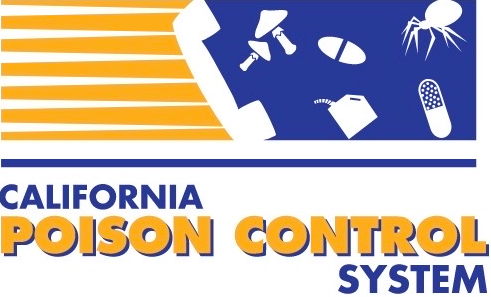By Landen Rentmeester, MD, and Binh Ly, MD
Introduction
Strychnine is an odorless, colorless crystalline powder that is found in both naturally occurring alkaloid forms as well as commercially produced salts. It has been used as a rodenticide since the 1500’s as well as for various antiquated medical treatments. Contemporary use of strychnine is mainly limited to the eradication of unwanted gophers, moles, and other rodents. However, unintentional toxicity has occurred from exposure to certain Chinese and Cambodian herbal medicines, as well as from adulterated illicit drugs. Exposures and mortality from strychnine have significantly declined in the U.S. since the 1920’s, with only nine reported deaths in the past decade.
Case presentation
A 40-year old female business executive presents with recurrent convulsive episodes that have developed over the past hour. She does not have a history of seizures or any other medical issues, but is currently in the midst of a divorce with her husband. As you enter the room, your pager goes off and the patient subsequently has another convulsive episode, where her back arches off the table, her arms flex and she seems to grimace, but is awake and alert throughout the event. After about a minute, the convulsions stop and the patient appears otherwise normal. Her physical exam is remarkable for temperature of 100.4° F and heart rate 130 beats per minute. Otherwise the physical examination is normal.
Questions
- What is the pathophysiology of strychnine poisoning?
- What is the clinical presentation of a patient who has been poisoned with strychnine?
- How is strychnine poisoning different from tetanus?
- What are the treatment options for strychnine poisoning?
Pathophysiology
Strychnine blocks the binding of glycine to the glycine chloride channel within the spinal cord. Under normal circumstances, glycine binding to this channel causes increased inward flow of chloride, hyperpolarizing the cell, and inhibiting its ability to propagate nerve signals. In the case of strychnine toxicity, the inhibitory effects of glycine are inhibited, which subsequently results in increased nerve signal transmission. Strychnine induced excitation typically prefers the nerve fibers of the spinal cord, where normal reflex arcs are accentuated, leading to unregulated muscle contraction, predominately in extensor muscle groups.
Clinical presentation
Patients poisoned with strychnine will have a rapid onset of symptoms, typically within an hour of exposure. Diffuse, involuntary muscle contractions are the hallmark of toxicity. Episodes of muscle contractions are classically caused by innocuous stimuli, such as turning on a light or loud sounds. Because of the arrangement and relative strength of the various muscle groups within the body, a patient will demonstrate flexion of the upper extremities and extension of the lower extremities. Characteristic facial muscle spasms also occur, where the eyebrows elevate, and an open, sustained grin appears (Sardonic grin). A phenomenon, called opisthotonus may also occur, in which severe contraction of the paraspinal muscles causes a characteristic arching posture of the neck and back. Typically the patient remains fully alert during these episodes, which may last up to two minutes, and recur for up to 24 hours. Other clinical effects include hyperthermia resulting from sustained muscle activity, as well as hemodynamic instability.
Diagnosis
Tetanus, like strychnine, also effects glycine mediated nerve cell inhibition. What makes tetanus different is that it prevents the release of glycine at the nerve terminal. The pattern of muscle contraction is very similar between the two toxins, however tetanus tends to have gradual onset of symptoms, and in generalized tetanus, spasm can last up to four weeks, with complete recovery taking several months in some cases The diagnosis of strychnine toxicity is typically made on historical information, such as ingestion of a rodent killer, but generalized muscle contractions in an awake patient without a postictal period is also helpful in making the diagnosis. Serum electrolytes, BUN, creatinine, CPK, blood gases, lactate, and urinalysis may be useful laboratory tests to obtain in the management of strychnine poisonings. Strychnine may be measured in the serum and urine, however strychnine levels correlate poorly with clinical toxicity.
Treatment
The most important aspect of treating the strychnine-poisoned patient is good supportive care. If muscle contractions are compromising protective airway reflexes or ventilation ability, then it is appropriate to intubate the patient. However, if the patient appears to be breathing well while spasms are controlled with a combination of minimizing stimuli and aggressive benzodiazepine therapy, then intubation may be safely avoided. In cases were muscle spasms are refractory, then a non-depolarizing neuromuscular blocking agent should be considered, which subsequently requires the patient to be sedated and intubated. Hyperthermia from muscle contractions should also be addressed with evaporative cooling measures but neuromuscular blockade may be necessary in refractory cases. The resultant muscle breakdown should be treated with administration of intravenous crystalloid either alone or combination with sodium bicarbonate with the goal of maintaining sufficient urinary flow to prevent pigment renal failure. Decontamination therapies should be used cautiously if at all, due to risk of aspiration and precipitation of convulsive activity.
Unintentional exposures without symptoms may be discharged after twelve hours of observation. Intentional exposures should be monitored for resolution of symptoms within this same time frame, should be considered for evaluation of any other potential ingestion if appropriate, and will require psychiatric evaluation.
Discussion of case questions and key points
- What is the pathophysiology of strychnine poisoning?
Strychnine inhibits the binding of glycine (an inhibitory neurotransmitter) to the glycine receptor in the spinal cord, causing excess neuromuscular excitation - What is the clinical presentation of a patient who has been poisoned with strychnine?
Patient’s poisoned with strychnine will demonstrate muscular convulsive episodes that are classically induced by minimal stimuli, while remaining alert. - How is strychnine poisoning different from tetanus?
Tetanus inhibits glycine release from nerve endings, while strychnine inhibits glycine binding to its receptor. They have very similar clinical manifestations, however strychnine has a faster onset and shorter duration - What are the treatment options for strychnine poisoning?
Supportive care is crucial, along with benzodiazepine administration for convulsive episodes, and minimization of stimuli. If indicated, airway integrity, hyperthermia and muscle breakdown should be addressed. Decontamination may induce convulsions and pose an aspiration risk.
Although reports of strychnine exposure and toxicity have decreased over time, it is an important consideration in an alert patient presenting with involuntary muscle contractions, especially if they have a history of tetanus immunization and exposure to rodenticides. Treatment is largely supportive, focusing on maintaining airway, breathing and circulation, as well as minimizing external stimulation and judicious use of sedatives.



